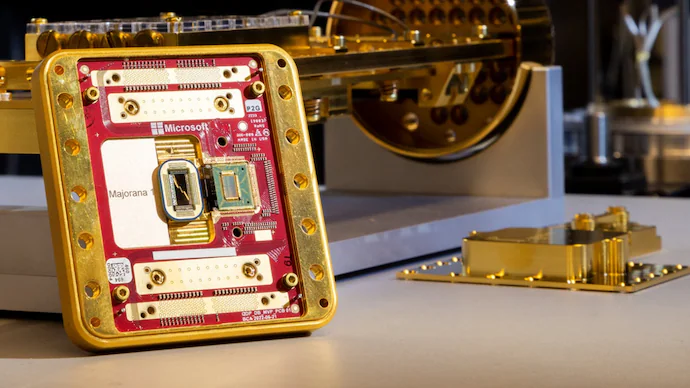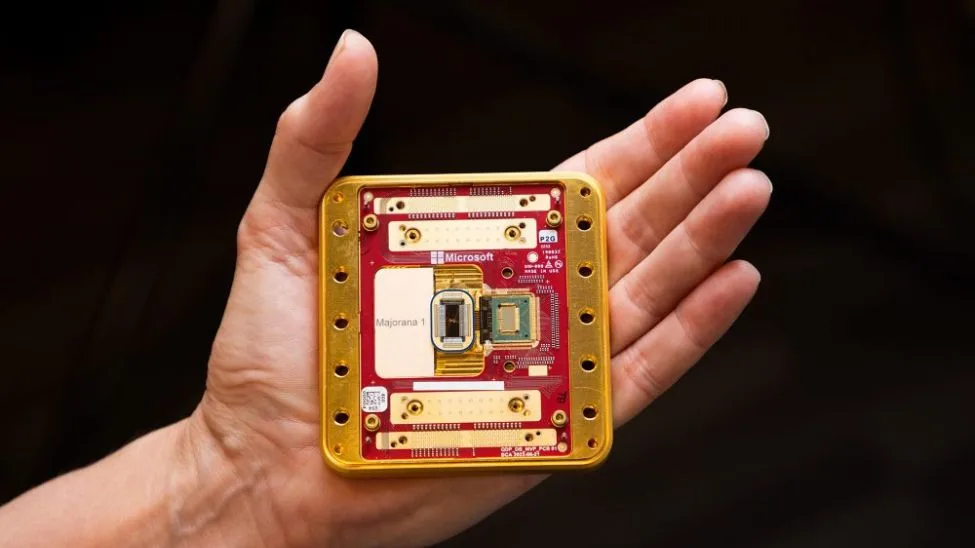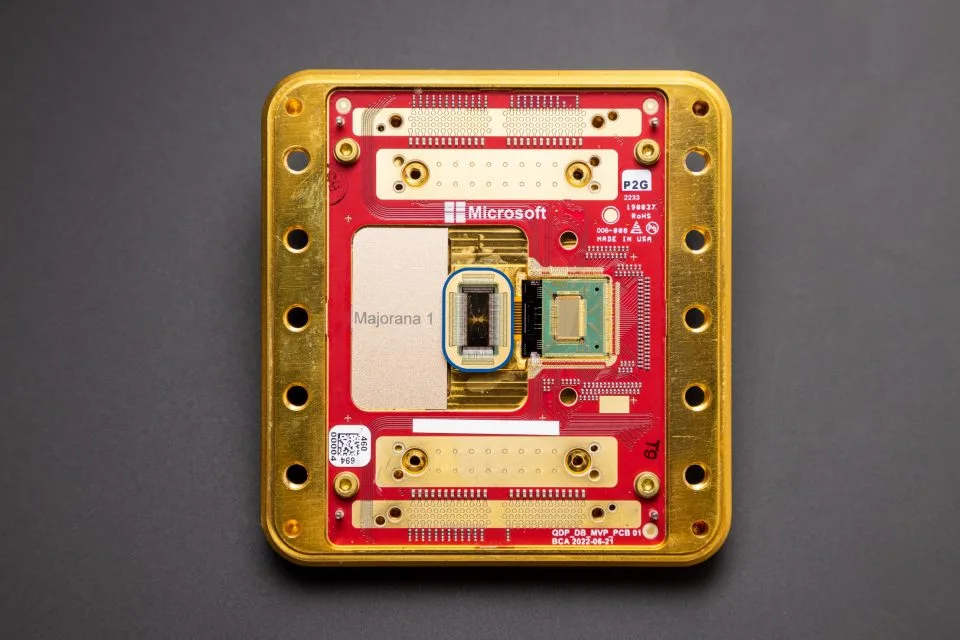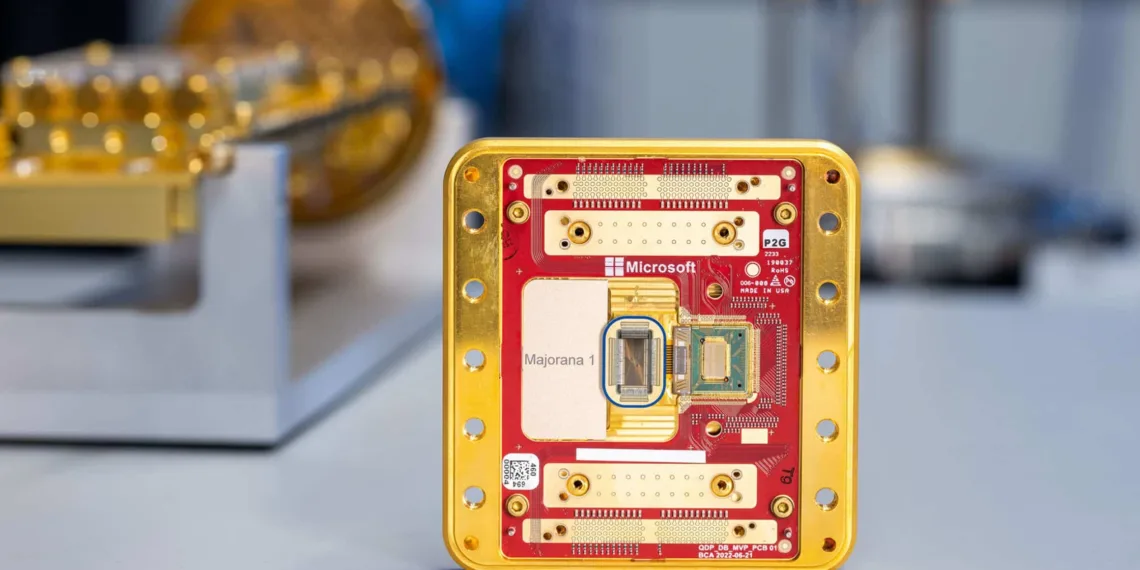Microsoft introduced its first quantum computing chip on Wednesday and claimed that quantum computing might become real in “years, not decades.” This forecast is consistent with predictions from Google and IBM that a major compute technology turnaround may soon take place.

Table of Contents
Majorana 1: Microsoft Unveils Its First Quantum Chip, Paving the Way for Error-Resistant Computing
The company’s Majorana 1 chip has eight qubits — the basic building blocks of quantum computing — embedded into a small device about the size of a sticky note. Microsoft views this chip as a step toward devising systems with a million qubits. While its current capabilities extend only to solving mathematical problems that validate its functioning, engineers say it provides a key platform for future quantum advances.
The development is a step toward exploiting the unique properties of these quantum particles for use in data centers and industries such as chemistry and health care. Microsoft says its Majorana 1 chip is less error-prone than rival technologies, and offers a hint of evidence in the form of a research paper appearing in the journal Nature soon. Notably, Majorana 1 is a first in many ways: it is the inaugural Quantum Processing Unit (QPU) powered by a Topological Core built to scale to a million qubits on a chip.

Understanding Microsoft’s research requires knowing that Majorana zero modes (MZMs) are special kinds of quantum states that form at the ends of certain types of superconducting wires. Unlike ordinary particles which have distinct matter and antimatter partners, Majorana particles are their own antiparticle. In quantum computing, multiple MZMs collaborate to store information. Scientists can compute by manipulating these particles through a process known as ‘braiding’, which provides outstanding stability and error resistance—essential for constructing more powerful quantum computers.
To build a quantum computer with Majorana particles, scientists need to be able to reliably measure their state. That’s exactly what Microsoft’s newest experiment is trying to do. The researchers built a special device built on indium arsenide (a semiconductor) and aluminum (a superconductor). This configuration allows the scientists to measure ‘fermion parity’—which tells whether the system has an even or odd number of electrons.

To sense this, they connected the superconducting wire to quantum dots — nanoscale regions that can trap and control electrons. By monitoring shifts in the quantum dots, scientists measured fermion parity changes with remarkable precision. Their results showed an exceptionally low error rate of just 1%, confirming the effectiveness of this method in studying Majorana particles and advancing quantum computing.
FAQs
What is Majorana 1?
Majorana 1 is Microsoft’s first quantum chip, featuring eight qubits and designed to scale up to a million qubits.
Why is it important?
It uses Majorana particles for improved error resistance, potentially revolutionizing quantum computing.








